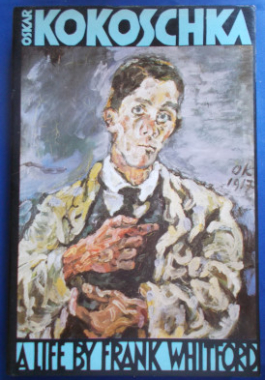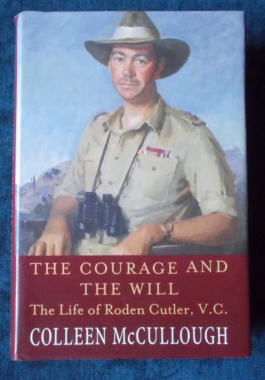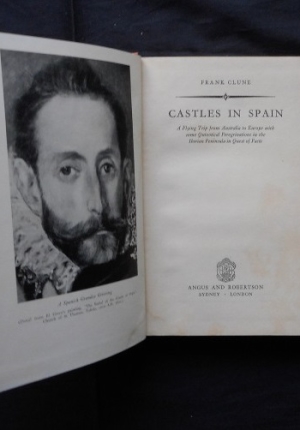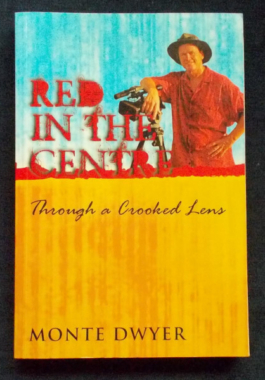-
 To Sail Beyond The Sunset to find the fabled Great South Land and claim its gold and treasure was the dream of generations of Europeans. In the eighteenth century, a desire to push even further the boundaries of the known world and science added impetus to the exploration of the mysterious southern latitudes. This history begins with the incredulous reactions of Dampier and of the later naturalists that followed - they found not gold, but a vast treasury of bizarre plants and animals that challenged the imagination and existing scientific dogma. Collectors such as George Caley, John Lewin and Allan Cunningham demanded the outlandish specimens. Apart from beautiful colour sketches of flora and fauna, there are also extracts from contemporary logs, journals and letters which give the fascination, bewilderment and enthusiasm at first hand.
To Sail Beyond The Sunset to find the fabled Great South Land and claim its gold and treasure was the dream of generations of Europeans. In the eighteenth century, a desire to push even further the boundaries of the known world and science added impetus to the exploration of the mysterious southern latitudes. This history begins with the incredulous reactions of Dampier and of the later naturalists that followed - they found not gold, but a vast treasury of bizarre plants and animals that challenged the imagination and existing scientific dogma. Collectors such as George Caley, John Lewin and Allan Cunningham demanded the outlandish specimens. Apart from beautiful colour sketches of flora and fauna, there are also extracts from contemporary logs, journals and letters which give the fascination, bewilderment and enthusiasm at first hand. -

Kokokschka, who died in 1980 at the age of 94, led perhaps the most adventurous life of any of the great painters of the 20th century. This biography is the first truthful account of his life, not the romantic image promoted by Kokoschka in his autobiography and by later biographers. He was brought up in Vienna and was the protege of Klimt, soon achieving notoriety for his revolutionary style of portraiture. Driven almost insane by a disastrous affair with Mahler's widow, severely wounded twice in World War I and forced from Germany by the Nazis in World War II, Kokoschka was recognised as one of the 20th century's most original painters. Illustrated with black and white photographs.
-
 The figure of the governess is very familiar from nineteenth-century literature, but much less is known about the governess in reality. This book is the first rounded exploration of what the life of the home schoolroom was actually like. Drawing on original diaries and a variety of previously undiscovered sources, Kathryn Hughes describes why the period 1840-80 was the classic age of governesses, examining their numbers, recruitment, teaching methods, social position and prospects. The governess provides a key to the central Victorian concept of the lady. Her education consisted of a series of accomplishments designed to attract a husband able to keep her in the style to which she had become accustomed from birth. Becoming a governess was the only acceptable way of earning money open to a lady whose family could not support her in leisure. Being paid to educate another woman's children set in play a series of social and emotional tensions. The governess was a surrogate mother, who was herself childless, a young woman whose marriage prospects were restricted and a family member who was sometimes mistaken for a servant.
The figure of the governess is very familiar from nineteenth-century literature, but much less is known about the governess in reality. This book is the first rounded exploration of what the life of the home schoolroom was actually like. Drawing on original diaries and a variety of previously undiscovered sources, Kathryn Hughes describes why the period 1840-80 was the classic age of governesses, examining their numbers, recruitment, teaching methods, social position and prospects. The governess provides a key to the central Victorian concept of the lady. Her education consisted of a series of accomplishments designed to attract a husband able to keep her in the style to which she had become accustomed from birth. Becoming a governess was the only acceptable way of earning money open to a lady whose family could not support her in leisure. Being paid to educate another woman's children set in play a series of social and emotional tensions. The governess was a surrogate mother, who was herself childless, a young woman whose marriage prospects were restricted and a family member who was sometimes mistaken for a servant. -

William Lashly (1867 - 1940) was a man of great modesty, self-effacing and by all accounts one of the most remarkable lower-deck men of the Royal Navy. Lashly was recruited by Scott for the Engine Room and proved his worth over and over again. He knew his job backwards, was a teetotaller and non-smoker and was always selected for the most difficult journeys on the expedition. This is the diary Lashly kept while on Scott's last expedition in the Terra Nova and gives a new view of both the expeditions and life below-decks. Illustrated with black and white photographs. https://en.wikipedia.org/wiki/William_Lashly
-
 In the years between 1860 and 1880, dozens of bushrangers, some bold and famous, some little more than petty thieves, rampaged across the New South Wales and Victorian countryside - looting and murdering, bailing up travellers, harassing police, terrorising settlers. Perhaps the most famous of these in the 1860s was a handsome young man named Ben Hall, the first official outlaw under a new Act, shot dead by police in 1865. Other members of his gang, "Flash" Johnny Gilbert, Johnny Vane, O'Meally and Dunn, were all captured or shot by their pursuers. Also outlawed were Frederick Lowry, the ferocious Daniel Morgan, and Fred Ward, better known throughout New South Wales as "Thunderbolt". Finally, in this second volume of his History of Australian Bushranging, Charles White examines at length the incredible story of the Kelly Gang - Ned, Dan, Steve Hart and Joe Byrne.
In the years between 1860 and 1880, dozens of bushrangers, some bold and famous, some little more than petty thieves, rampaged across the New South Wales and Victorian countryside - looting and murdering, bailing up travellers, harassing police, terrorising settlers. Perhaps the most famous of these in the 1860s was a handsome young man named Ben Hall, the first official outlaw under a new Act, shot dead by police in 1865. Other members of his gang, "Flash" Johnny Gilbert, Johnny Vane, O'Meally and Dunn, were all captured or shot by their pursuers. Also outlawed were Frederick Lowry, the ferocious Daniel Morgan, and Fred Ward, better known throughout New South Wales as "Thunderbolt". Finally, in this second volume of his History of Australian Bushranging, Charles White examines at length the incredible story of the Kelly Gang - Ned, Dan, Steve Hart and Joe Byrne. -
 This is not a 'novel of the TV series' - it's a small part of the memoirs in the rich life of Peter 'Nicholas Rhea' Walker, who was a 'bobbie' in a Yorkshire village in the 1960s and whose stories inspired the television series Heartbeat. This omnibus volume contains Constable On The Hill; Constable Around The Village and Constable Across The Moors. Here's all our favourite characters: Claude Jeremiah Greengrass, Sergeant Blaketon, P.C. 'Vesuvius' Ventress and more: Greengrass' dog Alfred's unfortunate incident with the budgerigar; young P.C. Nick's first very merry New Year in Aidensfield; the funeral of the ancient tramp, Irresponsible John and other touching, humorous and affectionately-remembered tales of the Yorkshire countryside.
This is not a 'novel of the TV series' - it's a small part of the memoirs in the rich life of Peter 'Nicholas Rhea' Walker, who was a 'bobbie' in a Yorkshire village in the 1960s and whose stories inspired the television series Heartbeat. This omnibus volume contains Constable On The Hill; Constable Around The Village and Constable Across The Moors. Here's all our favourite characters: Claude Jeremiah Greengrass, Sergeant Blaketon, P.C. 'Vesuvius' Ventress and more: Greengrass' dog Alfred's unfortunate incident with the budgerigar; young P.C. Nick's first very merry New Year in Aidensfield; the funeral of the ancient tramp, Irresponsible John and other touching, humorous and affectionately-remembered tales of the Yorkshire countryside. -
 Roden Cutler's list of honours is long and impressive, but it is his sole decoration, the Victoria Cross, that marks him as a hero. Over 800,000 men and women served in the Australian armed forces during the Second World War, but only twenty were awarded the V.C. Here are is the vivid life and times of the young soldier with the dashing good looks, the laconic humour and dislike of pretension who came back from the war determined to continue to support his mother, but, having lost a leg, with no idea how to do so. Yet by the age of 29 he was the Australian High Commissioner to New Zealand and his future diplomatic career would include stints to Ceylon, Egypt during the Suez crisis of 1956, Pakistan and New York. In 1966 he was appointed Governor of New South Wales; during his 15 years in the office he shared with Captain Arthur Phillip and Lachlan Macquarie, he earned his own niche among them as the `people's governor'. Much loved, still remembered as a man equally at home in the company of royalty or trade unionists. His story is embedded in Australian history, and part of it. But it is also the story of a man who pulled himself up by his bootstraps to serve his country with courage and dignity in the face of all obstacles.
Roden Cutler's list of honours is long and impressive, but it is his sole decoration, the Victoria Cross, that marks him as a hero. Over 800,000 men and women served in the Australian armed forces during the Second World War, but only twenty were awarded the V.C. Here are is the vivid life and times of the young soldier with the dashing good looks, the laconic humour and dislike of pretension who came back from the war determined to continue to support his mother, but, having lost a leg, with no idea how to do so. Yet by the age of 29 he was the Australian High Commissioner to New Zealand and his future diplomatic career would include stints to Ceylon, Egypt during the Suez crisis of 1956, Pakistan and New York. In 1966 he was appointed Governor of New South Wales; during his 15 years in the office he shared with Captain Arthur Phillip and Lachlan Macquarie, he earned his own niche among them as the `people's governor'. Much loved, still remembered as a man equally at home in the company of royalty or trade unionists. His story is embedded in Australian history, and part of it. But it is also the story of a man who pulled himself up by his bootstraps to serve his country with courage and dignity in the face of all obstacles. -

 Frank Clune, Australia's answer to H.V. Morton, makes a flying trip from Australia to Europe with some 'Quixotical' peregrinations in the Iberian Peninsula in quest of facts. And so he does - accompanied by his wife now that the boys are more than old enbough to be left on their own. No trip to Spain in 1952 would have been complete without a bull fight, but the Clunes also look into many out-of- way and off-the-tourist-track places. With black and white photographs.
Frank Clune, Australia's answer to H.V. Morton, makes a flying trip from Australia to Europe with some 'Quixotical' peregrinations in the Iberian Peninsula in quest of facts. And so he does - accompanied by his wife now that the boys are more than old enbough to be left on their own. No trip to Spain in 1952 would have been complete without a bull fight, but the Clunes also look into many out-of- way and off-the-tourist-track places. With black and white photographs.




